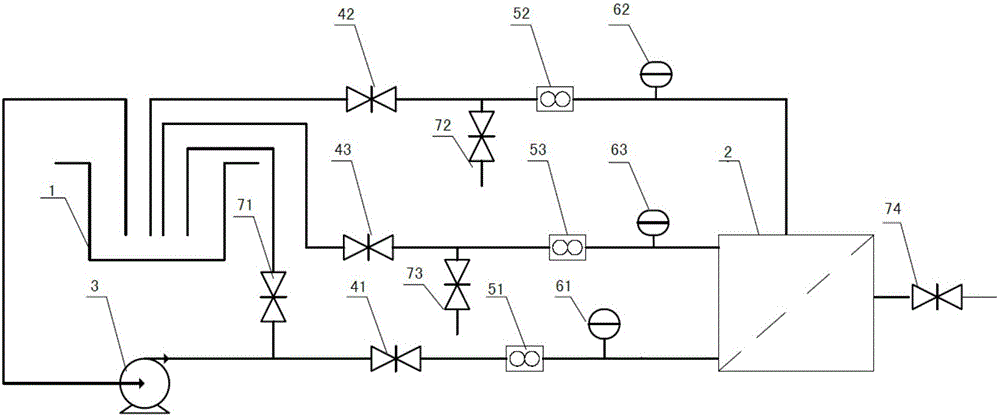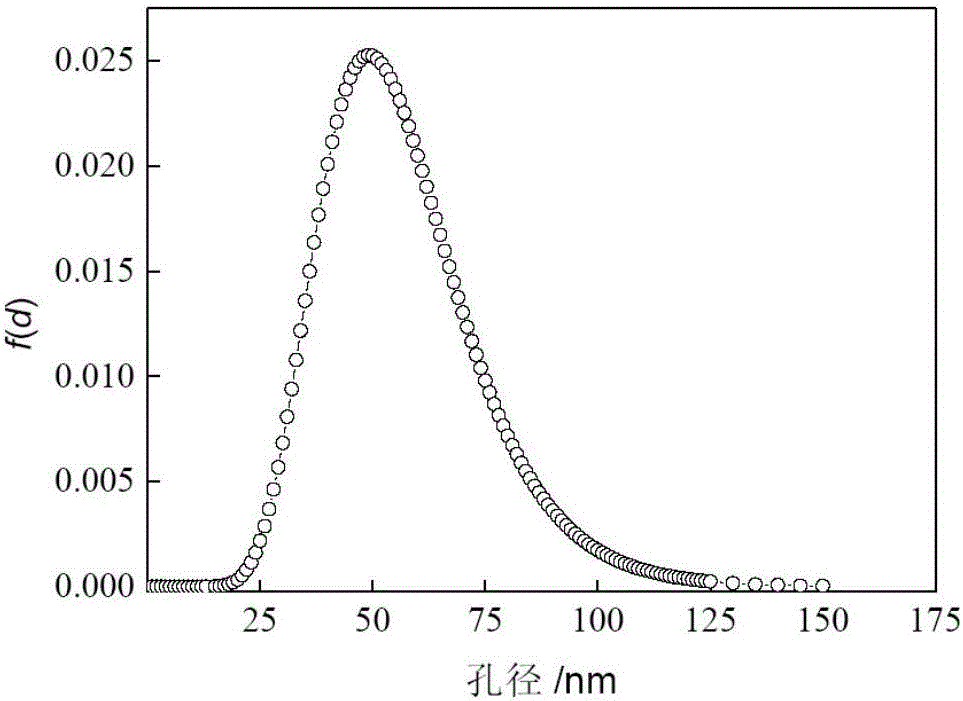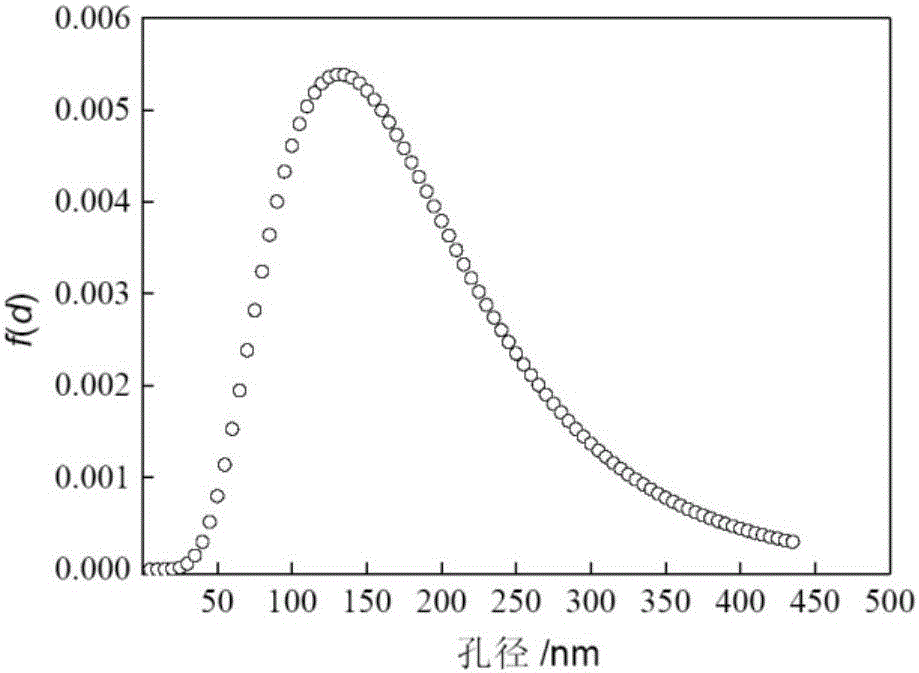Method for determining ultramicro filter membrane pore size and pore size distribution
A technology of ultra-microfiltration membrane and pore size distribution, which is applied in semi-permeable membrane separation, chemical instruments and methods, membrane technology, etc. It can solve the problems of inability to accurately detect effective pores, complex devices and operations, and difficult pressure, so as to achieve the goal of not being easily deformed , easy to operate, accurate measurement of the effect
- Summary
- Abstract
- Description
- Claims
- Application Information
AI Technical Summary
Problems solved by technology
Method used
Image
Examples
Embodiment 1
[0035] 1. Use a dynamic light scattering instrument to characterize the particle size distribution and average particle size of newly purchased polystyrene nanoparticles, and select polystyrene nanoparticles with a single peak distribution curve and a relatively concentrated particle size distribution as a reference.
[0036]2. Use UV spectrophotometer to scan the absorbance of polystyrene nanoparticles of each particle size between 200-900nm, detect that the maximum absorption wavelength of polystyrene nanoparticles used is 220nm, and make a test at the maximum absorption wavelength. Standard curve for nanoparticles of this particle size.
[0037] 3. Replace the sample cell 2 in the test device with an ultrafiltration cup, put the PES material flat diaphragm into the ultrafiltration cup, and connect the rest of the test device to start the test:
[0038] Firstly, a 30min ultrapure water filtration experiment was carried out under the pressure of 0.1MPa, mainly to wash the fla...
Embodiment 2
[0050] Step 1 and step 2 of this embodiment are exactly the same as step 1 and step 2 of embodiment 1, the difference is step 3, specifically:
[0051] 3. The hollow fiber membrane of PVDF material is packaged into a membrane module, and the test device is connected, and the test is started. According to the same test process as step 3 of embodiment 1, the retention rate data obtained are as shown in table 2:
[0052] Table 2
[0053]
[0054] According to the average particle diameter measured by the dynamic light scattering instrument in Table 2 and the interception rate of the corresponding particle size interception experiment, calculate the corresponding particle diameter when the interception rate is 50% and 90%, and the geometric mean pore diameter d 50 =198.55nm, nominal aperture d 90 =287.55nm, and obtain the pore size distribution according to the pore size distribution formula, such as image 3 shown.
PUM
| Property | Measurement | Unit |
|---|---|---|
| The average particle size | aaaaa | aaaaa |
Abstract
Description
Claims
Application Information
 Login to View More
Login to View More - R&D
- Intellectual Property
- Life Sciences
- Materials
- Tech Scout
- Unparalleled Data Quality
- Higher Quality Content
- 60% Fewer Hallucinations
Browse by: Latest US Patents, China's latest patents, Technical Efficacy Thesaurus, Application Domain, Technology Topic, Popular Technical Reports.
© 2025 PatSnap. All rights reserved.Legal|Privacy policy|Modern Slavery Act Transparency Statement|Sitemap|About US| Contact US: help@patsnap.com



